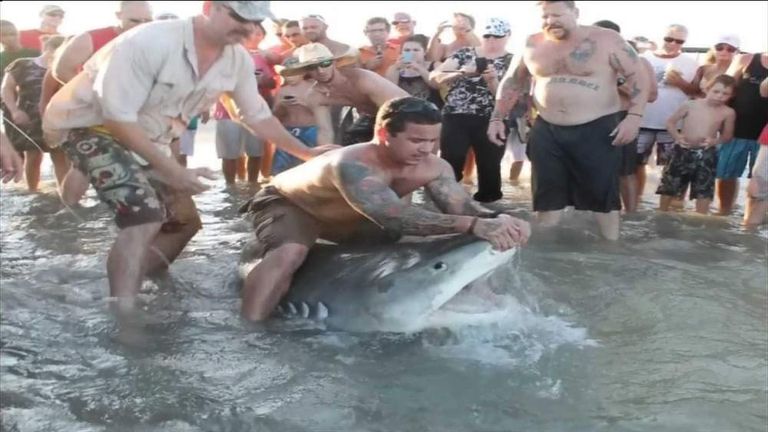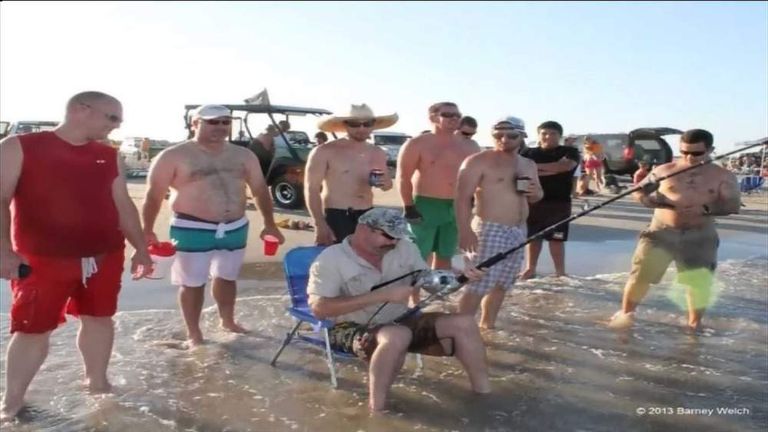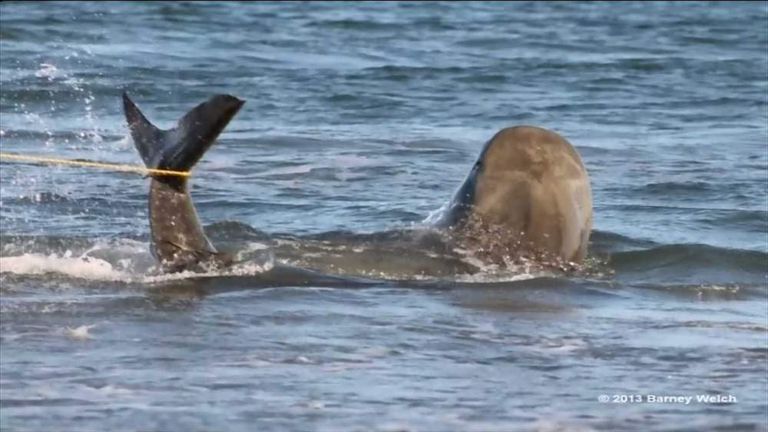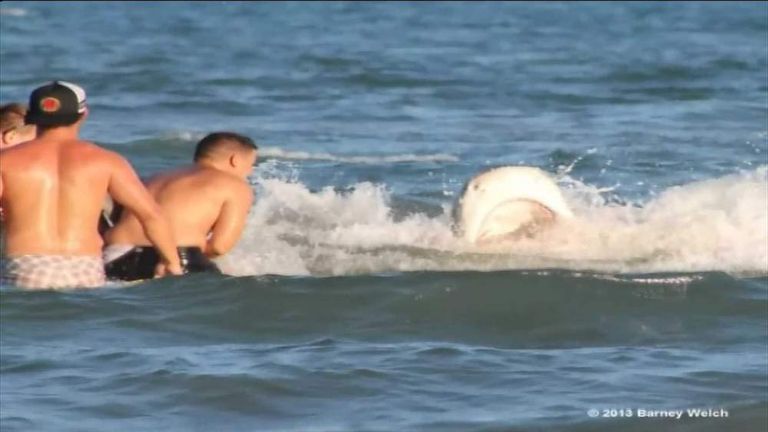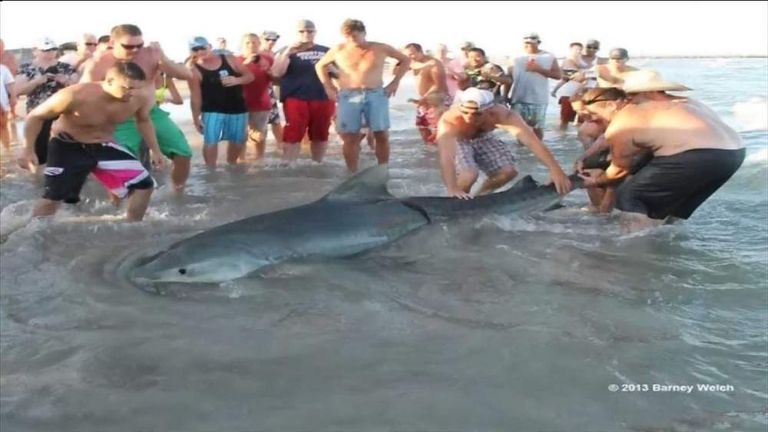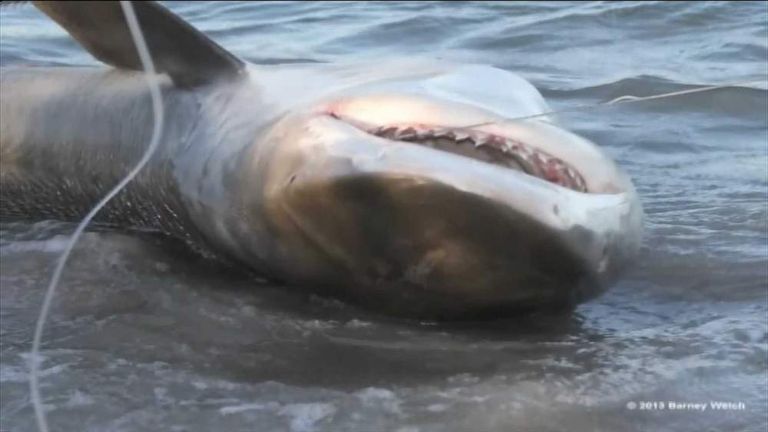Massive Tiger Shark Caught On Texas Beach
Monday 12 August 2013 08:46, UK
An angler spent a gruelling three and a half hours reeling in his biggest catch ever - a 12ft tiger shark.
Wayne Wimer caught the creature from the Gulf of Mexico, just south of the Packery Channel, on South Padre Island, near to Corpus Christi, Texas.
The shark was so strong and heavy, he was unable to haul it in himself and had to get a team of other anglers who were nearby to help him.
At one point Mr Wimer was so exhausted someone had to bring him a chair so he could carry on.
He said: "My legs were shaking, my lower back was killing me. I had no energy left."
When they finally reeled in the giant fish, they could not believe its size - a near record for the area.
Tiger sharks are known to grow up to five metres (16.4ft) , but specimens of such a size are relatively rare.
The fish was thrown back in the water - after the anglers tagged it and took the obligatory photos as proof of what they had caught.
Mr Wimer said: "They're majestic animals and that big - there's no reason to kill.
"We had a tag left over so we actually got to tag and released the shark so it actually has a tracking beacon on it, so if anybody ever catches it, we can find out all the information of where it's travelling, and all that kind of stuff, just to learn more about these animals."
The tag was provided by the Harte Research Institute for Gulf of Mexico Studies, in Corpus Christi.
Tiger sharks are one of the largest sharks in the seas, but are considered an endangered species.
They usually inhabit tropical waters, close to coastal areas, but have travelled as far north as southern California and South Carolina in the US and the Red Sea and Persian Gulf in Arabia.
Experts say it is unusual to catch them in the north part of the Gulf of Mexico.
They are the second most dangerous shark after great whites, responsible for 71 of the 590 unprovoked fatalities recorded from 1580 onwards, according to the International Shark Attack File.
